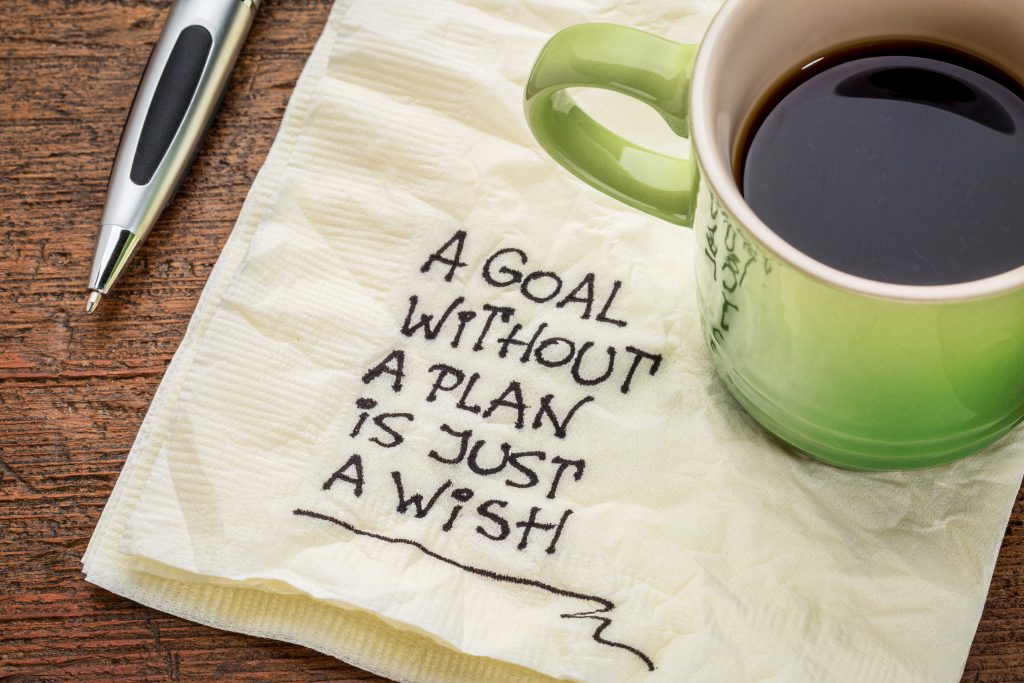As with any other year, the difference between a resolution that falls by the wayside before March or April and an accomplished goal is planning. We hope that we can help you take the next step from goal thought of, to goal accomplished.
The first step to accomplishing a goal is to write it down. Move from imagination to paper. Then we need to put a deadline on it. Now let’s get the mindset right. What will the accomplishing this goal do for you?
In 2021, I worked with a lot of clients on a budgeting goal. Mostly, the plan was to get ‘mortgage ready’. So, the goal by say, August, was to get mortgage approved. To do this, firstly we needed to figure out how much money was being earned each month. Then we needed to find out how much the likely mortgage was going to cost and then our clients needed to set up a ‘silo’ account so that the amount of their savings over a minimum 6-month period was enough to pay a stressed mortgage repayment each month. This is one way of being able to budget according to a goal and there’s a very clear method to accomplishing the goal.
Another number of clients I spoke to in 2021 may not have had a mortgage, holiday or defined savings goal, so their question was, how do they make the best use of the money they are earning? How should they allocate their money?
We generally live by the 50/30/20 Rule. This tends to fit most budgets really well and can be put together using 3 easy to follow steps.
- Calculate your net monthly income. Everything you are paid from your employment each month is added up.
- Get a true picture of your monthly spending. This is the hard part. If you print off your bank statement or download it from your online account, you’ll need to spend some time looking at your spending habits. A lot of online banking apps with for example AIB or N26 have some great insights into this but do not rely on them fully. Best do this step yourself the first time. Once you have a clear picture of your monthly income and monthly spending you should get them onto an easy-to-use spreadsheet for a visual. Quick plug here. We’ve done the hard work for you and created a budget planner you can use! You can download our personal budget toolkit here.
- Now make adjustments according to the 50/30/20 rule.
Here’s a quick guide.
This rule suggests that you spend half of your income (50%) on things you need, necessities. This covers things like rent or mortgage, trips to the supermarket, utilities and doctor visits etc. 30% of your income on the ‘nice to haves’ rather than ‘must haves’. These are the lunches out with friends, trips to the cinema, new outfits, etc. A clear distinction between needs and wants will help you to identify where you can save money. (20%) goes towards your future. Your first step might be creating an emergency fund. An emergency fund should be a minimum of 3 months take home pay.
Whatever your goals for 2022, take control of them, make changes you want to make and accomplish them.
Our financial planning process is to develop strategies in order to help you achieve your financial goals. Firstly, we have a discovery meeting with clients to make sure we are a good fit for each other to work together and achieve your goals, then we set up a meaningful action plan to fulfill your goals.
In 2022, take the first step and book a meeting with me. You can book a meeting by accessing my diary here.
I look forward to hearing from you.
Jonathan McDonnell, Personal Financial Planner.

